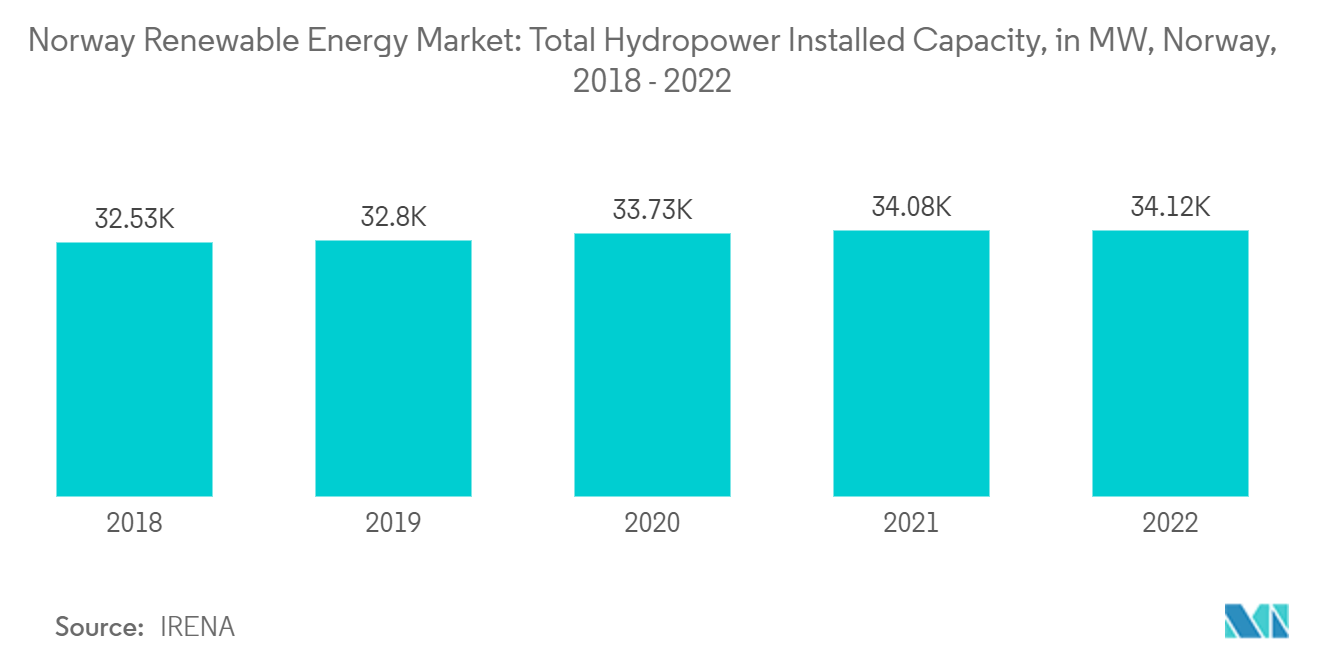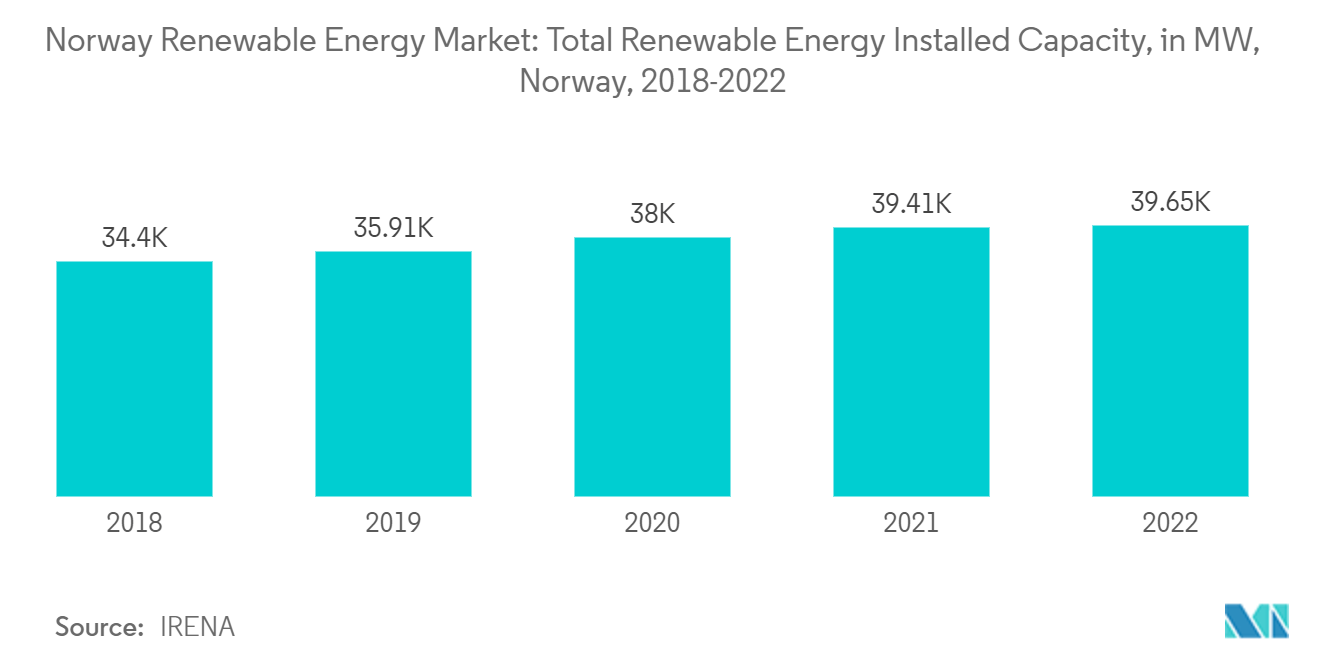Market Trends of Norway Renewable Energy Industry
Hydropower to Dominate the Market
- Norway's rugged terrain and numerous rivers provide a natural advantage for harnessing hydropower, making it a reliable and efficient renewable energy source. Hydropower's long-established presence in Norway's energy mix underscores its role as a nation's power generation cornerstone.
- Moreover, hydropower aligns seamlessly with Norway's commitment to sustainability and carbon neutrality. The intermittent nature of wind and solar energy sources can be offset by the stability and predictability of hydropower, enhancing grid stability and enabling a consistent power supply. Norway's national climate goals are intertwined with expanding hydropower capacity, emphasizing its role in achieving energy security while reducing greenhouse gas emissions.
- According to the International Renewable Energy Agency, in 2022, the cumulative installed hydropower capacity in the region was 34.11 GW compared to 34.07 GW in 2021, registering a growth rate of more than 1%. Although the growth rate has been meager in recent years, it is expected to improve in the coming years due to the nation's target of reducing carbon emissions.
- For instance, in June 2023, GE Vernova announced that the company had secured an upgrade project for the Aurland-1 Hydropower Plant in Norway. The company will replace the existing rotor poles, which is expected to increase the efficiency of the power plant by 20-30%. The project will be carried out from 2025-2027.
- Furthermore, the nation's extensive hydropower infrastructure offers a competitive advantage. Norway's experience in engineering, operation, and maintenance of hydropower facilities positions it as a global leader. This expertise ensures efficient operations and drives innovation in areas such as pumped storage, enabling the integration of variable renewable sources.
- In conclusion, the envisaged dominance of hydropower within the Norway renewable energy market is firmly grounded in abundant water resources, sustainability imperatives, and technological proficiency. As Norway navigates the complexities of a renewable energy transition, the expansion of hydropower emerges as a transformative force, poised to redefine energy generation, enhance grid resilience, and contribute significantly to the nation's journey towards a sustainable and carbon-neutral future.

Supportive Government Policies to Drive the Market
- Strategic policy frameworks, incentives, and financial mechanisms are designed to promote renewable energy adoption, foster innovation, and facilitate investments. The alignment of policy initiatives with national climate goals underscores the critical role of government in creating an enabling environment for renewable energy growth.
- Moreover, the stability and predictability offered by supportive policies bolster investor confidence. Clear regulations, feed-in tariffs, and guaranteed purchase agreements provide a reassuring backdrop for renewable energy projects, attracting domestic and international investments. This predictability mitigates risks and encourages the expansion of renewable energy capacities across various sectors.
- For instance, in July 2023, the Norwegian government released The Offshore Energy Act Regulations, which allows operators to explore offshore regions in the country to deploy renewable energy sources such as wind energy. This is expected to increase the renewable energy capacity during the forecasted period.
- Furthermore, government policies drive technology advancement and research in the renewable energy sector. Research grants, innovation funds, and collaborative initiatives between the public and private sectors foster the development of cutting-edge technologies, enhancing the competitiveness of renewable solutions in the energy landscape.
- According to the International Renewable Energy Agency 2022, the country's cumulative renewable energy installed capacity was 39,650 MW in 2022 compared to 39,406 MW in 2021, registering a growth rate of almost 0.7%. However, the growth rate is expected to increase during the forecasted period due to government policies to increase renewable energy in the country.
- In conclusion, the anticipated role of supportive government policies in propelling the Norway renewable energy market is deeply rooted in sustainable objectives, investor confidence, and technological progress. As Norway navigates the complexities of energy transition, government policies emerge as a transformative force, poised to redefine energy consumption patterns, attract investments, and significantly contribute to the nation's journey towards a greener and more resilient energy future.

